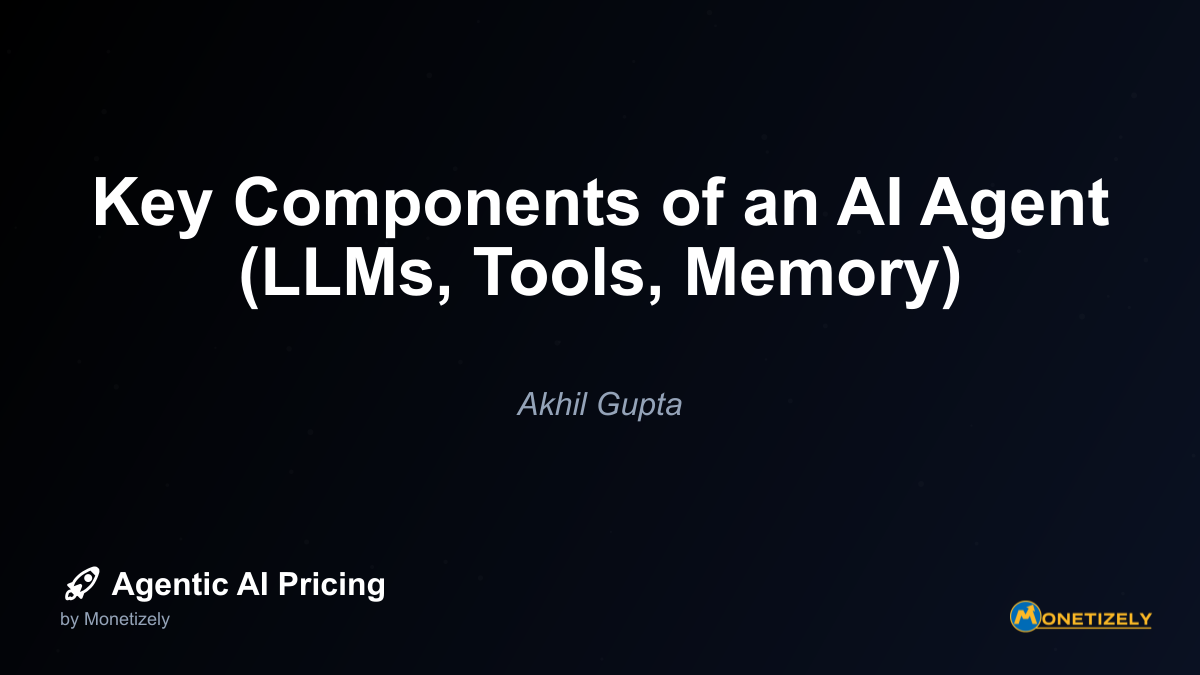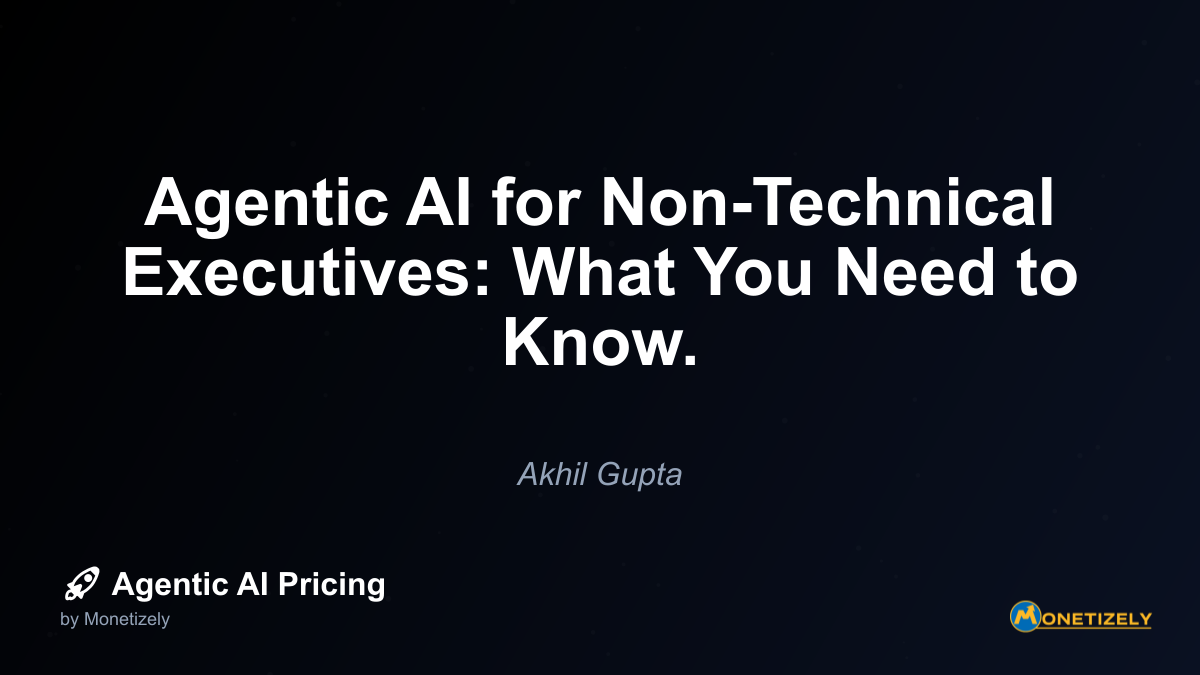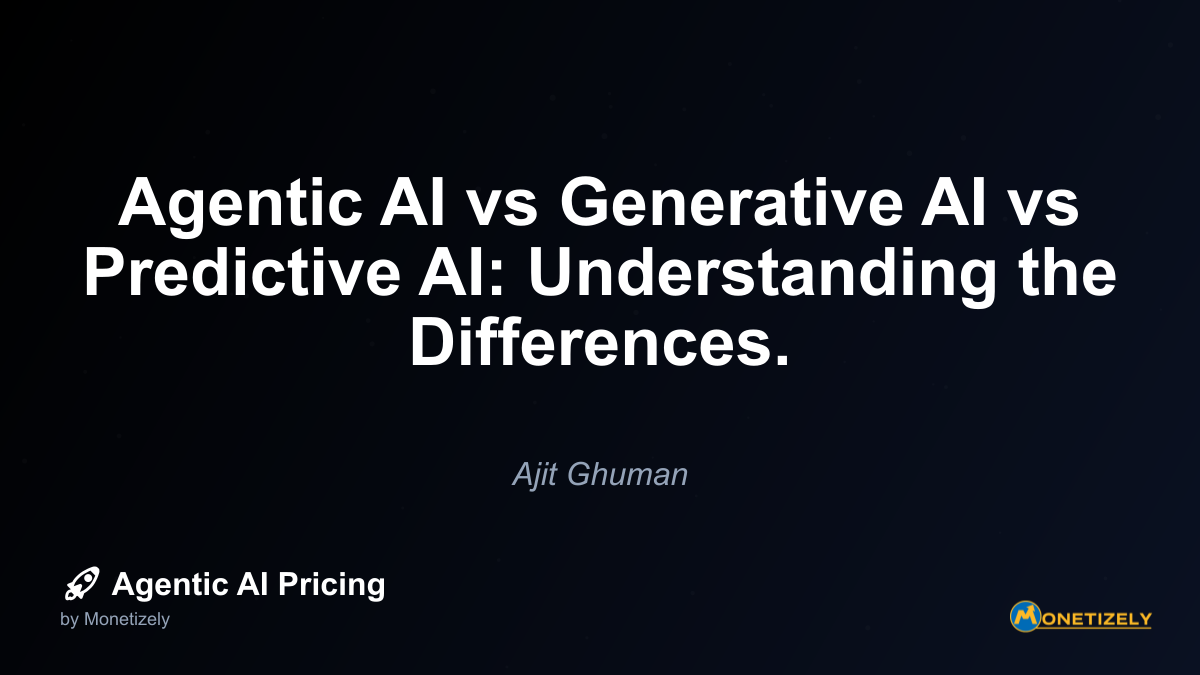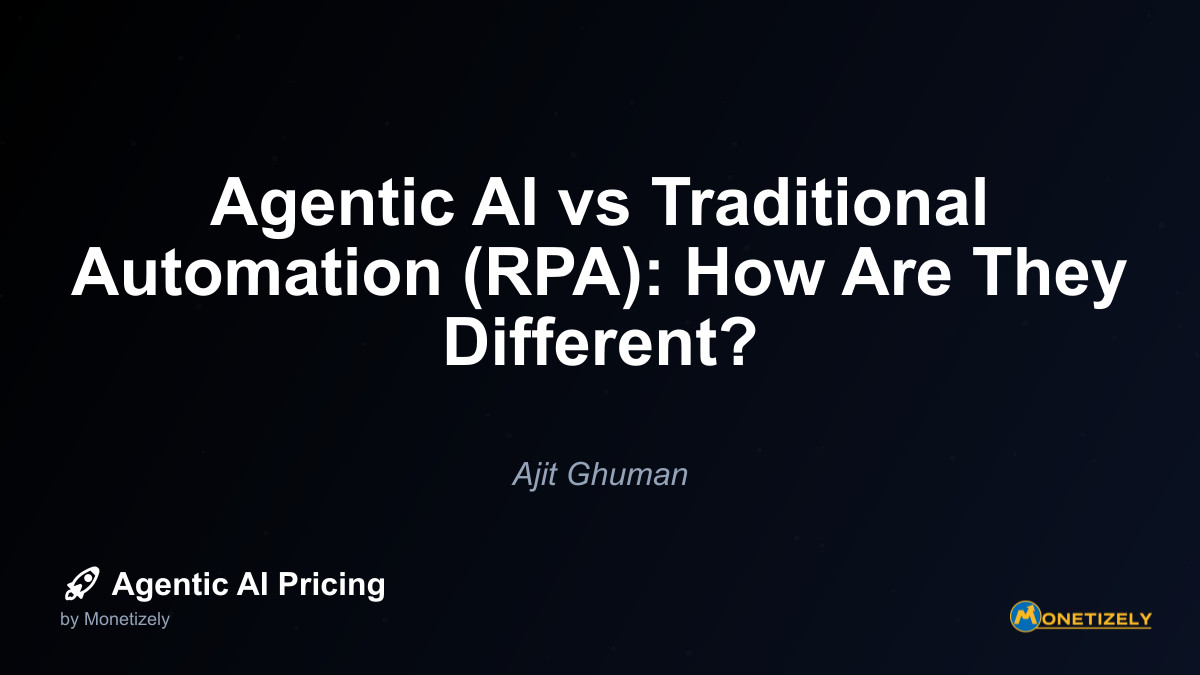· Akhil Gupta · Agentic AI Basics · 11 min read
Building Blocks of Autonomous Agents: From Chatbots to Complex Systems.
AI and SaaS Pricing Masterclass
Learn the art of strategic pricing directly from industry experts. Our comprehensive course provides frameworks and methodologies for optimizing your pricing strategy in the evolving AI landscape. Earn a professional certification that can be imported directly to your LinkedIn profile.
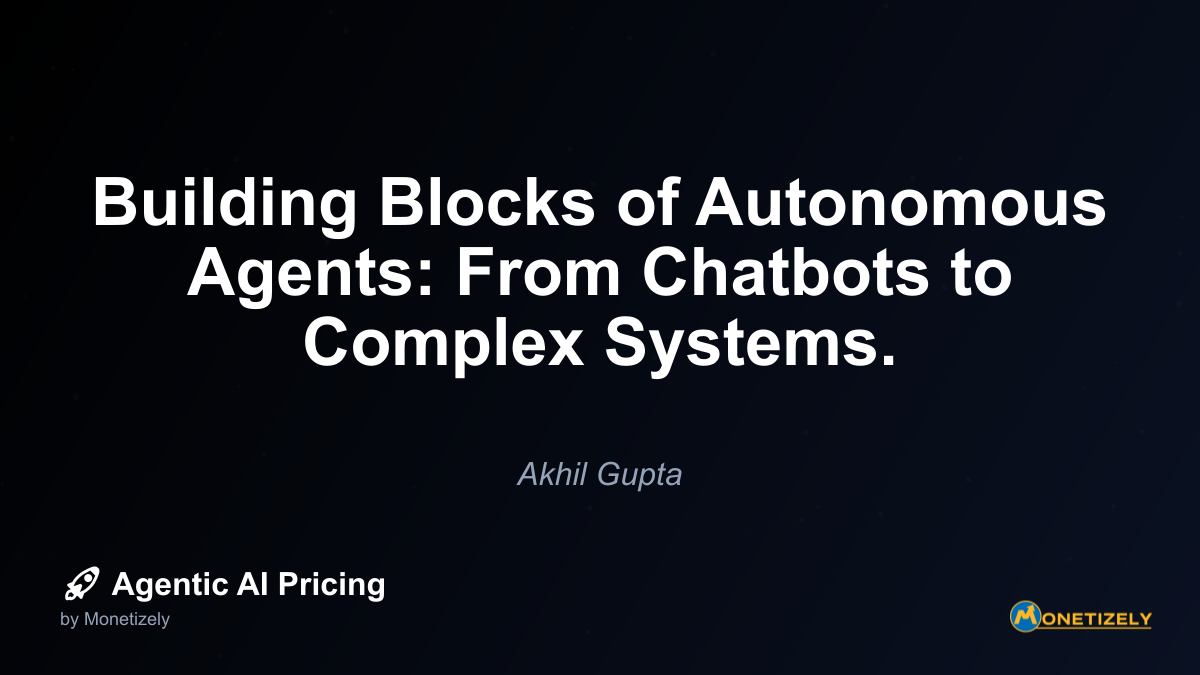
Autonomous agents have rapidly evolved from simple chatbots to sophisticated systems capable of handling complex tasks with minimal human intervention. This evolution represents a fundamental shift in how we conceptualize and implement artificial intelligence, moving from reactive programs to proactive systems that can understand, plan, and execute within dynamic environments.
The Evolution of AI: From Chatbots to Autonomous Agents
The journey from basic chatbots to fully autonomous agents illustrates the progressive development of AI capabilities. Early chatbots were simple rule-based systems designed to respond to specific inputs with predetermined outputs. These systems lacked true understanding and could only function within narrowly defined parameters.
Modern autonomous agents, by contrast, possess a range of capabilities that allow them to operate with increasing independence. They can perceive their environment through various inputs, reason about the information they receive, make decisions based on goals and constraints, and take actions that affect their surroundings. This progression represents not just a quantitative improvement in AI systems but a qualitative transformation in their fundamental nature.
The building blocks of autonomous agents include several key components:
- Perception systems that gather and interpret information
- Knowledge representation frameworks that organize what the agent knows
- Reasoning mechanisms that process information and draw conclusions
- Planning capabilities that determine sequences of actions
- Learning systems that improve performance over time
- Communication interfaces that enable interaction with humans and other agents
As these components become more sophisticated and better integrated, the resulting agents become capable of handling increasingly complex tasks with greater autonomy.
Defining the Spectrum of Autonomous Agents
Autonomous agents exist along a spectrum of capability and complexity. Understanding this spectrum helps organizations identify the right type of agent for their specific needs and recognize the development path toward more advanced systems.
Level 1: Simple Chatbots and Virtual Assistants
At the most basic level are rule-based chatbots and simple virtual assistants. These systems:
- Follow predefined scripts and decision trees
- Recognize specific patterns in user inputs
- Provide responses from a fixed repository of answers
- Operate within narrow domains with clear boundaries
- Require explicit programming for each possible interaction
Examples include customer service chatbots that answer frequently asked questions, voice assistants that perform basic commands, and interactive voice response (IVR) systems used in call centers.
While limited in their capabilities, these systems provide value through consistent performance in well-defined scenarios and can handle high volumes of routine interactions efficiently.
Level 2: Context-Aware Conversational Agents
Moving up the spectrum, context-aware conversational agents represent a significant advancement. These systems:
- Maintain conversation history to provide contextually relevant responses
- Employ natural language processing to understand user intent
- Adapt responses based on previous interactions
- Handle more complex queries with fewer explicit rules
- Integrate with external systems to access information
Modern digital assistants like Siri, Alexa, and Google Assistant fall into this category, as do advanced customer service bots that can understand and respond to multi-turn conversations.
These agents create more natural interaction experiences and can handle a wider range of tasks, though they still operate within defined domains and lack true autonomous decision-making capabilities.
Level 3: Task-Specific Intelligent Agents
Task-specific intelligent agents are designed to perform complex functions within particular domains with minimal supervision. These agents:
- Possess specialized knowledge in specific fields
- Make decisions based on complex rules and heuristics
- Learn from feedback and improve performance over time
- Execute multi-step processes autonomously
- Adapt to changing conditions within their domain
Examples include recommendation engines that personalize content, fraud detection systems that identify suspicious patterns, and automated trading algorithms that execute financial transactions based on market conditions.
These agents deliver significant value through their ability to handle complex tasks at scale, often performing at or above human-level in their specialized domains.
Level 4: Agentic AI Systems with Planning Capabilities
Agentic AI systems represent a substantial leap in autonomy. These systems:
- Formulate and pursue goals independently
- Develop plans to achieve objectives across multiple steps
- Reason about constraints and resources
- Adapt plans based on changing circumstances
- Coordinate with other systems and humans
Examples include advanced project management assistants that can break down complex goals into actionable tasks, research agents that can gather and synthesize information from diverse sources, and personal productivity agents that manage schedules and communications.
These systems begin to demonstrate true agency—the ability to act on behalf of users with a degree of independence that goes beyond following explicit instructions.
Level 5: Multi-Agent Systems and Agent Ecosystems
At the most advanced level are multi-agent systems and agent ecosystems. These complex arrangements:
- Involve multiple specialized agents working in coordination
- Distribute tasks based on agent capabilities and availability
- Negotiate and resolve conflicts between competing objectives
- Adapt collectively to new challenges and opportunities
- Emerge capabilities greater than the sum of individual agents
Examples include supply chain management systems where multiple agents handle different aspects of procurement, production, and distribution; smart city infrastructures that coordinate traffic, energy, and emergency services; and enterprise automation platforms that integrate across departments and functions.
These systems represent the frontier of autonomous agent technology, capable of handling extremely complex scenarios that require diverse capabilities and coordinated action.
Core Capabilities That Define Advanced Autonomous Agents
As agents progress along this spectrum, they develop increasingly sophisticated capabilities that enable greater autonomy and effectiveness. Understanding these capabilities helps organizations assess the potential value and limitations of different agent implementations.
Perception and Environment Interaction
Advanced agents need sophisticated perception systems to gather information about their environment. This includes:
- Multi-modal inputs: Processing text, voice, images, and structured data
- Sensor integration: Incorporating information from various sources
- Real-time processing: Handling continuous streams of information
- Selective attention: Focusing on relevant information while filtering noise
- Situational awareness: Maintaining an updated model of the environment
The quality of an agent’s perception directly impacts its ability to make appropriate decisions and take effective actions. Limitations in perception create boundaries for what tasks an agent can successfully perform.
Knowledge Representation and Reasoning
How agents organize and use knowledge fundamentally shapes their capabilities:
- Knowledge bases: Structured repositories of facts and relationships
- Ontologies: Formal representations of domain concepts and connections
- Inference engines: Systems for drawing conclusions from available information
- Uncertainty handling: Methods for reasoning with incomplete or probabilistic information
- Causal reasoning: Understanding relationships between actions and outcomes
More sophisticated knowledge representation allows agents to handle more complex scenarios and make better decisions in novel situations.
Learning and Adaptation
The ability to learn from experience and adapt to changing circumstances is crucial for advanced agents:
- Supervised learning: Improving performance based on labeled examples
- Reinforcement learning: Developing strategies through trial and error
- Transfer learning: Applying knowledge from one domain to another
- Continual learning: Updating capabilities without forgetting previous skills
- Meta-learning: Learning how to learn more efficiently
Learning capabilities determine how quickly agents can improve and how well they can handle new situations not explicitly programmed during their development.
Planning and Decision-Making
Autonomous agents need sophisticated planning capabilities to achieve complex goals:
- Goal decomposition: Breaking down objectives into manageable sub-goals
- Path planning: Determining sequences of actions to achieve goals
- Resource allocation: Managing time, computational resources, and other constraints
- Risk assessment: Evaluating potential outcomes and their probabilities
- Adaptive planning: Adjusting plans based on new information
The sophistication of planning capabilities determines how effectively agents can pursue complex objectives in dynamic environments.
Communication and Collaboration
Advanced agents need robust communication capabilities:
- Natural language understanding: Comprehending human instructions and feedback
- Multimodal communication: Exchanging information through various channels
- Intention recognition: Understanding the goals behind communications
- Protocol adherence: Following established conventions for interaction
- Negotiation: Resolving conflicts and aligning objectives with other agents
Communication capabilities determine how effectively agents can work with humans and other systems to achieve shared goals.
Building Autonomous Agent Systems: Architectural Approaches
The architecture of autonomous agent systems significantly influences their capabilities, scalability, and robustness. Several architectural approaches have emerged as particularly effective for different types of agent implementations.
Modular Agent Architectures
Modular architectures organize agent capabilities into distinct, interchangeable components:
- Perception modules: Handle different types of inputs
- Reasoning modules: Process information and make decisions
- Action modules: Execute different types of operations
- Learning modules: Improve performance in specific areas
- Communication modules: Manage interactions with users and other systems
This approach enables incremental development and testing, allows for specialized optimization of different components, and facilitates the integration of new capabilities over time.
Cognitive Architectures
Cognitive architectures attempt to model human-like intelligence by implementing theoretical models of cognition:
- Working memory: Temporarily storing and manipulating information
- Long-term memory: Preserving knowledge over extended periods
- Attention mechanisms: Focusing processing on relevant information
- Goal management: Maintaining and prioritizing objectives
- Metacognition: Monitoring and regulating cognitive processes
These architectures aim to create more general intelligence capable of handling diverse tasks and adapting to new domains with minimal additional programming.
Multi-Agent System Architectures
Multi-agent architectures distribute capabilities across specialized agents that collaborate to achieve complex goals:
- Agent specialization: Developing expertise in particular domains
- Coordination mechanisms: Managing interactions between agents
- Resource sharing: Efficiently allocating computational resources
- Conflict resolution: Handling competing objectives and constraints
- Emergent behavior: Enabling capabilities that arise from agent interactions
This approach allows for greater scalability, robustness through redundancy, and the ability to handle extremely complex tasks through decomposition and specialization.
Integration Capabilities: Connecting Agents to the Digital Ecosystem
The power of autonomous agents often comes from their ability to integrate with external systems and resources. This integration capability determines what information agents can access and what actions they can take.
API Integration
API integration allows agents to connect with external services and platforms:
- Authentication and authorization: Securely accessing protected resources
- Data transformation: Converting between different formats and schemas
- Rate limiting and caching: Managing resource constraints
- Error handling: Gracefully managing integration failures
- Versioning: Adapting to changes in external systems
Robust API integration capabilities enable agents to leverage existing digital infrastructure and services, dramatically expanding their effective capabilities.
Tool Use and Orchestration
Advanced agents can use specialized tools to extend their capabilities:
- Tool selection: Choosing appropriate tools for specific tasks
- Parameter configuration: Setting up tools for particular use cases
- Workflow orchestration: Combining tools in effective sequences
- Output interpretation: Processing and using tool results
- Tool learning: Discovering how to use new tools effectively
The ability to use tools effectively allows agents to perform specialized tasks without requiring all capabilities to be built into the agent itself.
Database and Knowledge Base Access
Access to structured information resources expands agent capabilities:
- Query formulation: Constructing effective database queries
- Result filtering: Identifying relevant information in query results
- Knowledge integration: Incorporating new information into existing knowledge
- Consistency management: Handling contradictory or outdated information
- Privacy and security: Respecting access controls and data governance
These capabilities determine how effectively agents can leverage organizational knowledge and data resources.
Implementation Challenges and Considerations
Building effective autonomous agent systems involves addressing several key challenges:
Balancing Autonomy and Control
Finding the right balance between agent independence and human oversight:
- Intervention interfaces: Mechanisms for humans to guide or override agents
- Explainability: Making agent reasoning transparent and understandable
- Confidence measures: Indicating when agents are uncertain
- Approval workflows: Requiring human authorization for significant actions
- Feedback mechanisms: Learning from human corrections and preferences
This balance depends on the stakes involved in agent decisions, regulatory requirements, and organizational risk tolerance.
Scalability and Performance
Ensuring agents can handle increasing workloads and complexity:
- Computational efficiency: Optimizing resource usage
- Distributed processing: Spreading workloads across infrastructure
- Caching and pre-computation: Reducing redundant operations
- Prioritization: Allocating resources to the most important tasks
- Graceful degradation: Maintaining core functionality under resource constraints
These considerations become increasingly important as agents take on more critical roles in organizational processes.
Security and Privacy
Protecting sensitive information and preventing misuse:
- Access control: Limiting what information agents can access
- Data minimization: Using only necessary information for tasks
- Audit trails: Recording agent actions for review
- Adversarial robustness: Resisting manipulation attempts
- Compliance mechanisms: Adhering to relevant regulations
Security and privacy considerations are essential for maintaining trust in agent systems, particularly when they handle sensitive information or make consequential decisions.
The Future of Autonomous Agents
The trajectory of autonomous agent development points toward several emerging trends:
Increasing Generality
Future agents will likely demonstrate greater versatility:
- Cross-domain reasoning: Applying knowledge from one area to another
- Few-shot learning: Quickly adapting to new tasks with minimal examples
- Conceptual understanding: Grasping abstract ideas and principles
- Creative problem-solving: Developing novel approaches to challenges
- Adaptive interfaces: Adjusting interaction styles to different users
This trend will reduce the need for specialized agents and enable more flexible deployment across various use cases.
Deeper Integration
Agents will become more deeply embedded in digital infrastructure:
- Operating system integration: Becoming core components of computing platforms
- Internet of Things connectivity: Interacting with physical devices and environments
- Enterprise system integration: Connecting across organizational boundaries
- Continuous operation: Functioning as persistent services rather than discrete applications
- Ambient intelligence: Creating seamless, context-aware automated experiences
This integration will make agent capabilities more accessible and useful in everyday contexts.
Collaborative Intelligence
The relationship between human and artificial intelligence will evolve:
- Complementary strengths: Combining human creativity with machine precision
- Adaptive collaboration: Shifting responsibility based on context and capability
- Shared mental models: Developing common understanding of goals and constraints
- Mutual learning: Humans and agents improving together over time
- Trust calibration: Developing appropriate reliance on agent capabilities
This collaborative approach will likely prove more effective than either fully autonomous systems or traditional human-directed computing.
Conclusion
The spectrum of autonomous agents represents a fundamental transformation in how we interact with technology. From simple chatbots to complex multi-agent systems, each level of capability opens new possibilities for automation, augmentation, and innovation.
Organizations looking to leverage autonomous agent technology should:
- Assess their specific needs to determine what level of agent capability is appropriate
- Start with well-defined use cases where agent value can be clearly demonstrated
- Build incrementally toward more sophisticated implementations
- Develop governance frameworks that balance autonomy with appropriate oversight
- Invest in integration capabilities that connect agents to existing systems and data
As autonomous agent technology continues to advance, the distinction between different levels of capability will likely blur, with increasingly sophisticated systems becoming more accessible and affordable. Organizations that develop expertise in effectively deploying and managing these systems will gain significant advantages in operational efficiency, customer experience, and innovative capability.
The building blocks of autonomous agents—perception, knowledge, reasoning, planning, learning, and communication—provide a framework for understanding this technology and its potential. By focusing on these fundamental capabilities rather than specific implementations, organizations can develop strategies that remain relevant as the technology landscape evolves.
Co-Founder & COO
Akhil is an Engineering leader with over 16+ years of experience in building, managing and scaling web-scale, high throughput enterprise applications and teams. He has worked with and led technology teams at FabAlley, BuildSupply and Healthians. He is a graduate from Delhi College of Engineering and UC Berkeley certified CTO.
Pricing Strategy Audit
Let our experts analyze your current pricing strategy and identify opportunities for improvement. Our data-driven assessment will help you unlock untapped revenue potential and optimize your AI pricing approach.

